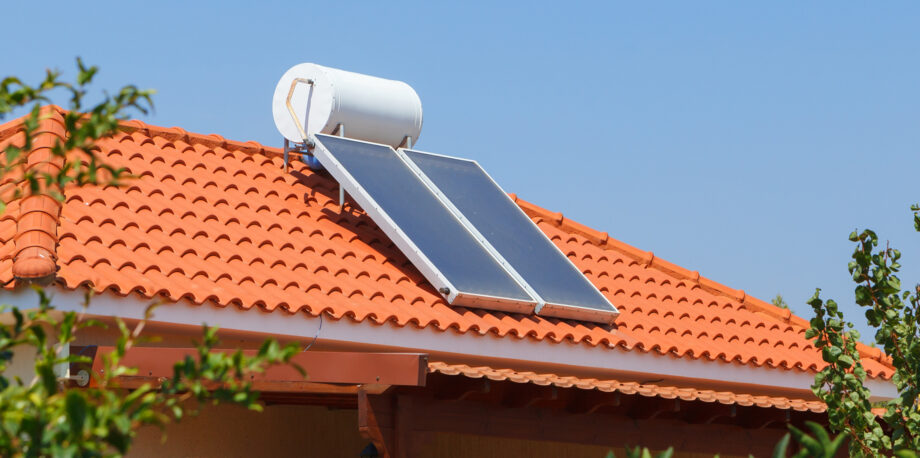Why aren't solar-powered water heaters more popular in the US?
Published on by Water Network Research, Official research team of The Water Network in Case Studies
WHY AREN’T SOLAR WATER HEATERS MORE POPULAR IN THE U.S., EVEN IN SOLAR-FRIENDLY STATES LIKE CALIFORNIA?
Despite widespread global success and huge opportunity for reducing fossil fuel demand, solar water heating is virtually unheard of in the U.S. Evidence suggests our demand for simple fixes is to blame.
 Photo © iStockphoto.com | AlSimonov
Photo © iStockphoto.com | AlSimonov
For Gershon Grossman and Ed Murray, 1978 was a big year. Grossman, then a solar energy pioneer at the Technion, Israel’s premier technological institute, was launching the first International Conference on the Application of Solar Energy. Murray, an idealist attending college, joined an upstart solar heating company in Sacramento, California’s capital, drawn by a prescient concern about climate change and, as he puts it, an impulse to “save the world.” For both, the excitement was palpable. Solar water heaters were surging into the market, solar thermal energy showed broad potential, and the two were riding the wave.
Four decades later, however, they live in two different worlds. In Israel, 85% of households get hot water from a dud shemesh , or “sun boiler.” But in the U.S., despite decades of advocacy by Murray and others, the number of households that have a solar water heater is less than 1%. In California, many people don’t even know the technology exists.
America’s solar water heating deficit is often portrayed as a historical accident driven by the vagaries of politics and comparatively cheap fossil fuels. However, interviews with academic and commercial players on the front lines of the solar thermal industry, and a recent in-depth report on the now-expired California Solar Initiative–Thermal (CSI-T) program, suggest that the desire for simple, “magic bullet” solutions to climate change has also played a significant role in relegating this practical technology to the sidelines.
A Mandate, an Election and Two Roads Diverged
Heating water accounts for 25% of residential energy use worldwide, mostly achieved by burning fossil fuels. Solar water heaters do the job without combustion. Unlike solar photovoltaic (PV) systems, which convert sunlight into electricity, solar thermal systems collect solar energy as heat. Solar water heaters transfer this heat to water in a holding tank. Other energy sources, such as natural gas or electricity from a power grid, serve as a backup for cloudy days.
By tapping the sun, solar water heaters can reduce a household’s water heating fuel consumption 50% to 70%. And Israel is just one of dozens of countries with a variety of climates where this technology has been deployed. Solid performance and wide applicability have made the technology one of Project Drawdown’s top 50 climate change solutions.
So why did solar thermal technology soar in Israel and sputter in California, setting Grossman and Murray on such different life paths? A pair of political decisions in the 1970s and 1980s had dramatic impact.
The Yom Kippur War of 1973 and subsequent oil embargo made energy independence a matter of national security worldwide, but the pinch was particularly painful in countries lacking oil production. For Israel, the threat was existential; as former Israeli prime minister Golda Meir famously quipped, “[Moses] took us 40 years through the desert in order to bring us to the one spot in the Middle East that has no oil.” In 1976, Israel mandated solar water heaters for all new residential buildings up to eight stories tall — a mandate that was extended to all residential buildings in December 2019.
For Grossman, now a professor emeritus at the Technion and head of the Energy Forum at the Neaman Institute for National Policy Research, mandating solar water heaters made sense environmentally, even beyond Israel’s political agenda. “You just can’t argue with the numbers on how much [energy] you can save using solar water heating instead of electrical heating.”
The United States also felt the jolt of the oil embargo and feared running out of domestic oil. Supported by President Jimmy Carter’s 1978 federal tax credits for renewable energy, Americans installed nearly 1 million solar thermal systems by 1990, supplied by more than 200 U.S. manufacturers, including leading corporations such as Grumman Aerospace Corporation and Sears Roebuck.

In Israel, 85% of households get hot water from a dud shemesh, or “sun boiler.” In the U.S., it’s a different story. Photo courtesy of Yaniv Hassidof
However, in contrast to Israel, America’s commitment to renewable energy proved ephemeral. Under President Ronald Reagan, the federal incentives lapsed, dealing the solar thermal industry a body-blow. “We went from 650 companies in California that were installing solar [water heaters] to about 37 overnight,” recalls Murray, who is currently the president and CEO of two California companies dedicated to manufacturing, distributing and installing solar thermal systems, as well as president of the California Solar and Storage Association.
Recent attempts to revive the residential solar water heater industry have had limited success. The CSI-T program, begun in 2010 as a larger push to incentivize solar installations statewide, aimed to add 200,000 systems, but received only 6,237 applications for residential retrofits in 10 years, according to the program’s December 2019 report. “I could put a sign over the front door of my office that says ‘free solar water heating,’ and they’d probably still stay away in droves,” Murray says with a wry laugh.
Attached link
http://www.youtube.com/embed/Hr9G9OACxxYTaxonomy
- Solar Water Heaters